Are you curious about the single fin surfboard? These classic boards, once the only option for surfers, are experiencing a resurgence in popularity. This guide delves into the unique characteristics of single fins, exploring their advantages and disadvantages compared to their multi-fin counterparts.
Whether you’re a seasoned surfer seeking a new challenge or a beginner curious about the sport’s roots, this guide will equip you with the knowledge to decide if a single fin surfboard is right for you. Let’s dive in!
What is a Single Fin Surfboard?
A single fin surfboard is exactly what the name suggests: a surfboard designed to be ridden with only one fin, typically large and centrally located on the tail. While they may appear simpler than their multi-fin counterparts, single fin surfboards offer a distinct riding experience and hold a special place in surfing history.
These boards come in various shapes and sizes, encompassing longboards, shortboards, and even “fun shapes” designed for general enjoyment and wave catching. Despite the diverse forms, the single fin configuration remains the defining characteristic. This single point of contact with the water translates to a unique ride compared to boards with multiple fins.
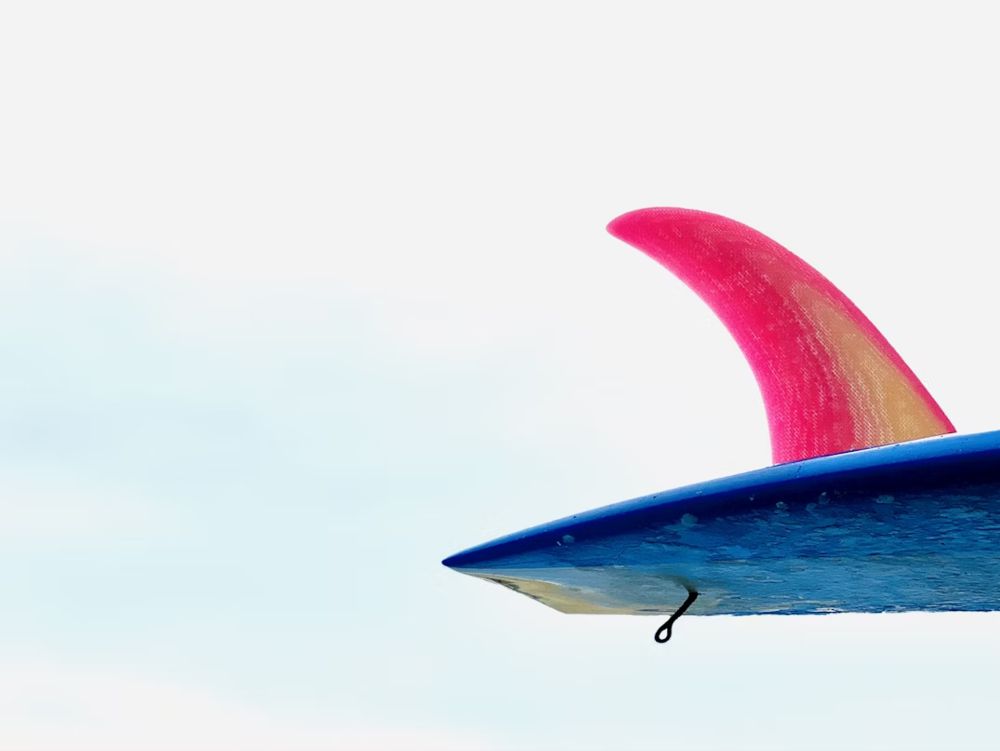
Single fin surfboards are known for their smooth glide, offering a sense of flow and connection with the wave face. They excel in generating speed and maintaining a straight line, making them ideal for nose riding and classic longboard maneuvers. However, their turning ability is generally less responsive than multi-fin setups, requiring a different approach from the surfer.
While not as widely used as multi-fin boards in competitive surfing, single fin surfboards remain popular among surfers seeking a connection to the sport’s heritage and a unique riding experience. They reward skilled surfers with a sense of mastery and a focus on fundamentals like balance and body positioning.
Interested in exploring how different surfboard fin setups can influence your riding experience? Whether you’re a seasoned pro or just starting out, understanding the impact of your surfboard’s fin configuration can greatly enhance your performance and enjoyment of the waves.
Single Fin Surfboard and Its Characteristics
Now, let’s examine the specific characteristics that define the single fin surfboard experience.
1. One fin reduces drag
One of the defining characteristics of the single fin surfboard is its impact on drag. Compared to boards equipped with multiple fins, a single fin setup experiences less resistance as it glides through the water. This translates to several noticeable advantages for the surfer.
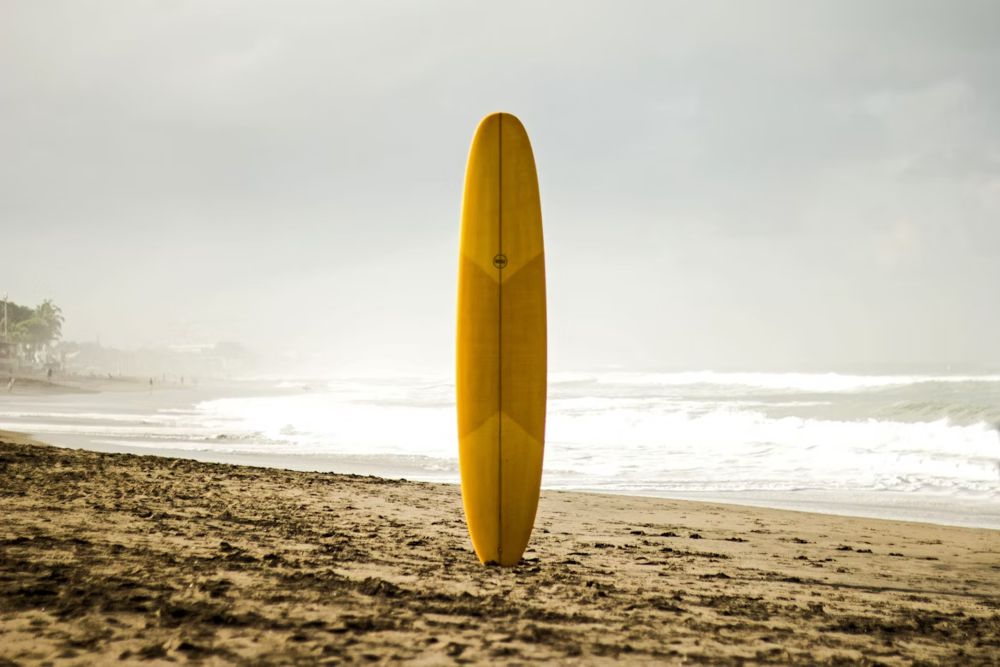
- Efficient speed generation: Single fin surfboards experience less drag, allowing for easier speed maintenance and making them ideal for long, rolling waves and nose riding.
- Straighter lines: The reduced drag also helps single fins maintain straighter lines through the water, benefiting classic longboard maneuvers like nose riding and trimming.
However, it’s important to note that the reduced drag also comes with a disadvantage. While offering advantages in specific situations, it also contributes to the single fin surfboard’s wider turning radius compared to multi-fin setups. This can make performing sharp and maneuverable turns more challenging, requiring a different approach from the surfer and limiting their suitability for certain wave types.
2. Increased turning radius
One of the most noticeable characteristics of a single fin surfboard fins are its increased turning radius compared to multi-fin setups.
Single fin surfboards have one big fin in the middle, unlike boards with many smaller fins. This single fin makes the board turn in wider circles because it acts like one big pivot point.
This wider turning needs more planning from the surfer. They have to think ahead and move their body weight just right to turn the board where they want. This can be tricky, but it also helps surfers learn to control their boards better.
However, the increased turning radius also fosters a unique riding experience. It allows smoother, more drawn-out turns, emphasizing flow and connection with the wave face. In skilled hands, this characteristic can translate to aesthetically pleasing, classic maneuvers that evoke the sport’s early days.
Additionally, the wider turning radius can be advantageous when riding long, unbroken waves, allowing surfers to maintain their line and cover greater distances with fewer, more controlled turns.
3. Trimming Not Pumping
Another key difference between single fin surfboards and multi-fin setups is their approach to generating speed and maintaining control. Unlike the pumping technique commonly used with multi-fins, single fin surfboards excel in trimming.

Pumping involves rapid back-and-forth movements on the surfboard, leveraging the fins as leverage points to propel the board forward. However, the single fin on a single fin surfboard isn’t designed for this purpose. Its larger size and central positioning offer stability and control rather than acting as a fulcrum for quick bursts of speed.
Instead, trimming on a single fin surfboard focuses on subtle body position and weight distribution adjustments to maintain speed and navigate the wave face. This technique emphasizes reading the wave and anticipating its movements, allowing the surfer to “trim” the board by subtly adjusting their stance and weight to maintain the desired line and speed.
4. Increased Dimensions
Single fin surfboards are often characterized by their increased dimensions compared to their multi-fin counterparts. These larger dimensions, encompassing length, width, and thickness, contribute significantly to the unique riding experience offered by these boards.
- More stable and glide: Longer boards are easier to balance, especially for beginners and in weak waves. They also keep moving smoother and longer.
- Catch smaller waves: Wider boards have more surface area, making it easier to paddle and catch weak waves. They’re also more stable for beginners.
- Easier paddling and floating: Thicker boards float higher in the water, making paddling and catching waves easier. They can also support heavier surfers comfortably.
It is important to note that the increased dimensions of single fin surfboards also affect responsiveness. While offering stability and wave-catching advantages, the larger size can make sharp, aggressive turns more challenging compared to their multi-fin counterparts.
However, skilled surfers can utilize these dimensions to their advantage, focusing on smooth, flowing lines and leveraging the board’s inherent stability and glide for a unique and rewarding surfing experience.
5. Increased Hold
One last notable characteristic of single fin surfboards is their increased hold, which is particularly advantageous in specific situations encountered while surfing single fin surfboards. This enhanced hold primarily stems from the design of the single fin surfboard fin itself.

- Better stability in big waves: The larger single fin helps the board grip the water better, preventing slipping and giving surfers more control in powerful waves. This makes them ideal for experienced surfers tackling larger waves.
- Improved power for maneuvers: The deeper fin also allows surfers to push off the wave face harder, generating more power for maneuvers like cutbacks and bottom turns. This helps skilled surfers utilize the wave’s energy for powerful and dynamic surfing.
However, it’s important to note that increased hold can come with a slight trade-off in terms of maneuverability. The deeper fin engagement can make the board feel slightly less responsive in tight spaces or when attempting quick changes in direction. This requires skilled surfers to adapt their approach, focusing on smooth, flowing lines and utilizing body positioning techniques to navigate maneuvers effectively.
Pros and Cons of Single Fin Surfboards
Before choosing a single fin surfboard, it’s important to weigh the pros and cons. Below is our summary:
| Pros (suitable for those who): | Cons (not suitable for those who): |
|---|---|
| Single fins excel in generating speed and maintaining a connected feel with the wave. | Turning requires more space and planning due to the single fin. |
| Larger size and efficient paddling make them suitable for catching and riding weaker waves. | Not as widely used due to the emphasis on sharp maneuvers. |
| Mastering trimming and body positioning techniques offers a unique sense of accomplishment. | Requires more skill and balance to control compared to multi-fin boards. |
| The deeper single fin provides stability and control in powerful waves. | Requires more skill and balance to control compared to multi-fin boards. |
| Offers a distinct experience compared to multi-fin setups. | Not ideal for performing progressive tricks. |
| Enhances control and maneuverability in specific situations. | Fewer options available compared to the diverse range of multi-fin surfboards. |
| The deeper single fin provides stability and control in powerful waves. | Not ideal for performing progressive tricks. |
| Offers a distinct experience compared to multi-fin setups. | Fewer options available compared to the diverse range of multi-fin surfboards. |
| Enhances control and maneuverability in specific situations. |
Single Fin on Different Surfboard Types
Having explored single fin advantages and drawbacks, let’s now examine how this setup performs on different surfboard types.
1. Single Fin on Longboards
Single fins on longboards offer a unique blend of performance and character, catering to a specific surfing style. While not ideal for every longboarder, they excel in certain areas, making them a popular choice for those seeking a distinctive ride.
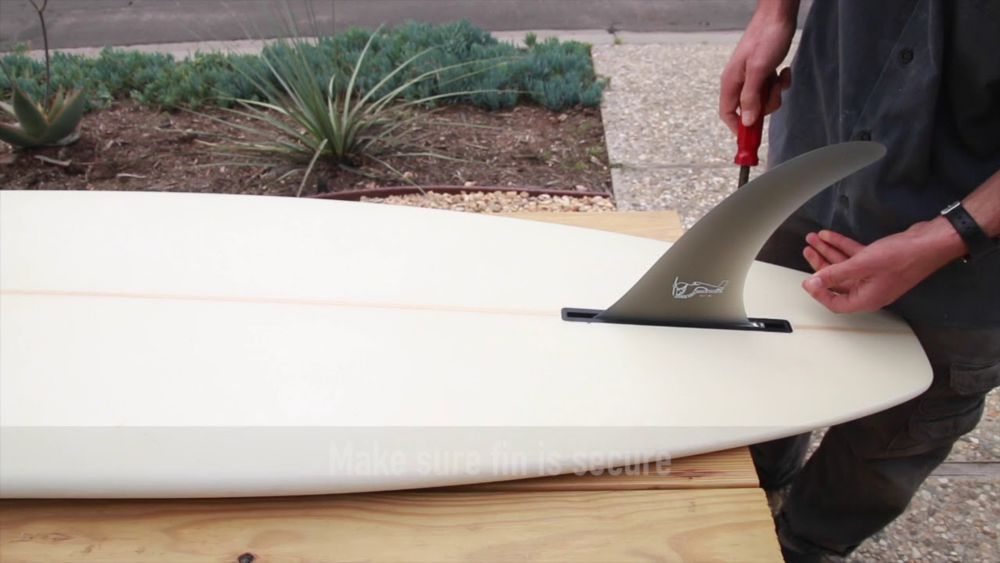
Firstly, single fins promote speed and flow. With less drag than multi-fin setups, single fins allow for smoother gliding and longer, drawn-out turns. This characteristic is desirable for noseriding, a longboard maneuver where the surfer stands on the front of the board. Legends like George Greenough and Joel Tudor popularized this style, often utilizing single fins for their graceful, drawn-out maneuvers.
However, the trade-off for speed and flow comes from reduced maneuverability. Single fins offer less stability and control during tight turns than their multi-fin counterparts. This can be challenging for aggressive maneuvers or quick changes in direction.
Therefore, single fins on longboards are best suited for surfers who prioritize smooth, flowing lines and noseriding. Suppose you’re looking for a board that excels in carving tight turns and performing radical maneuvers. In that case, a multi-fin setup might be a better choice.
2. Single Fin on Shortboards
Single fins on shortboards present a distinct challenge compared to the dominant thruster or quad fin setups. While offering a specific niche performance, they generally require a different approach that suits a particular surfer profile.
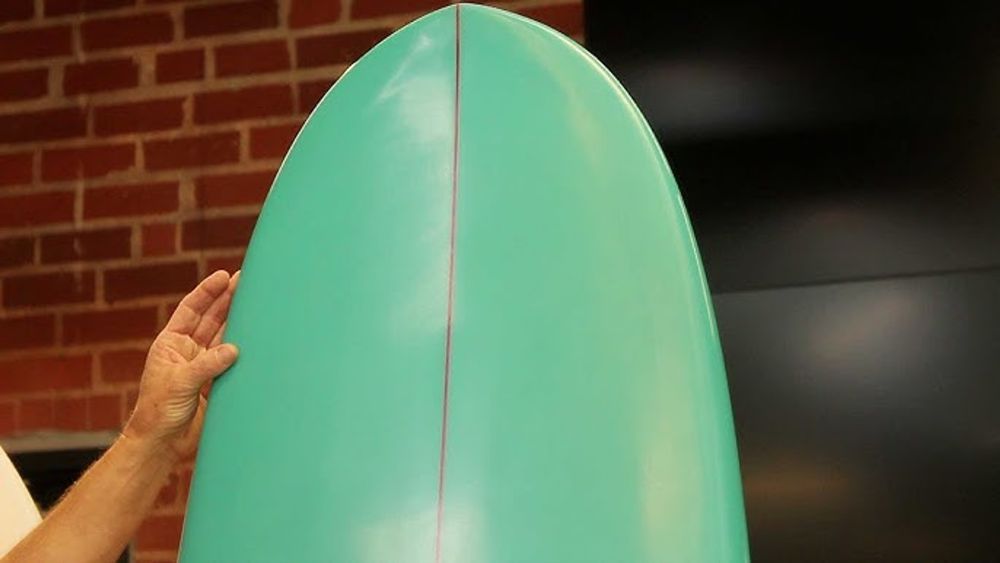
One advantage of single fins on shortboards is their ability to generate long, drawn-out carves. The single point of contact with the water allows smooth, flowing turns emphasizing style and finesse over sharp, aggressive maneuvers. This characteristic is particularly sought after by surfers who prioritize a classic, “retro” surfing style.
However, the lack of multiple fins comes at the cost of reduced maneuverability. The single fin setup makes tight turns and quick reactions more difficult, particularly in critical sections of the wave. This can limit surfers who want to perform high-performance maneuvers or navigate steeper, faster waves.
Therefore, single fins on shortboards are generally favored by surfers who prioritize smoothness, flow, and classic style over aggressive maneuvers. While not the dominant choice for competitive surfing, it offers a unique and enjoyable experience for surfers seeking a connection to the sport’s roots and a more traditional riding style.
3. Single Fin on Mid-Length Surfboards
Single fins on mid-length surfboards occupy a middle ground between their counterparts on longboards and shortboards, offering a unique blend of performance characteristics. They bridge the gap between the smooth, flowing style of single-fin longboards and the maneuverability of multi-fin setups on shortboards.
One key advantage of single fins on mid-lengths is their versatility. They excel in catching waves, similar to longboards, due to their increased surface area and efficient paddling.
Additionally, the single fin allows for smooth, drawn-out turns reminiscent of longboards while offering more responsiveness than their longer counterparts. This makes them suitable for a wider range of wave conditions and riding styles, from mellow rolling waves to steeper sections.
However, single fins on mid-lengths still lack the same level of maneuverability as multi-fin setups like thrusters. While they offer more turning capability than single-fin longboards, performing tight, aggressive maneuvers is still more challenging. This can be limiting for surfers who prioritize high-performance surfing characterized by quick maneuvers and radical turns.
How to Surfing Faster with Single Fin
While single fins are known for their smooth, flowing style, achieving speed remains crucial to effective surfing. Here’s how the Boost Fin system can help you gain momentum and ride faster with your single-fin setup.
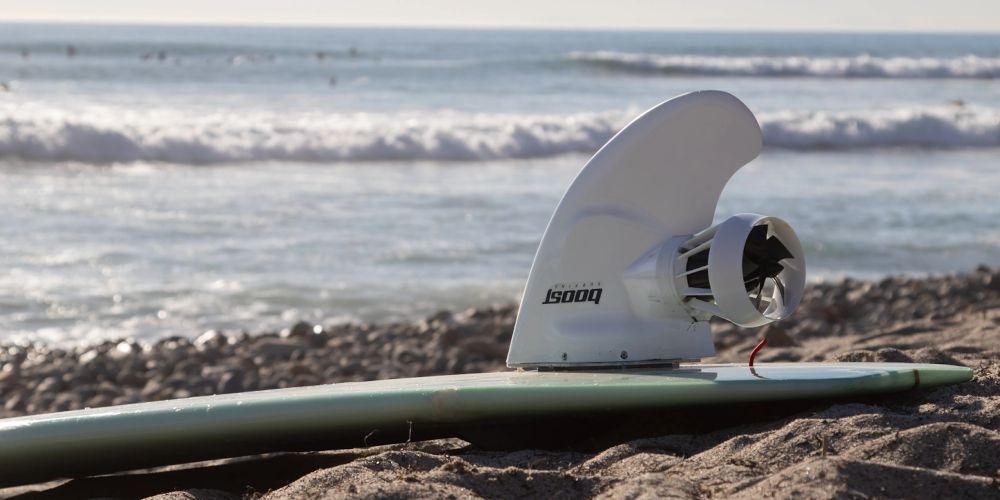
The Boost Fin, typically a single, large fin with a unique shape and pattern, aims to address the limitations of traditional single fins. Key features include:
- Effortless paddling: The motor propels the board forward, making paddling to the break and positioning yourself for waves significantly easier.
- Increased wave catching: The “quick boost” option offers a short burst of power, perfect for catching smaller or fading waves.
- Extended sessions: The long-lasting battery allows extended surfing sessions without worrying about running out of juice.
- Customization: The Boost Fin app lets users adjust the duration and intensity of the boost modes, tailoring the experience to their preferences.
- Durable construction: Built to withstand the demands of saltwater and surf conditions.
While the Boost Fin is not intended to replace traditional surfing techniques, it can be a valuable tool for single-fin enthusiasts who want to maximize their wave count and enjoy a more relaxed ride.
Surf Faster with Boost Fin
In conclusion, single-fin surfboards offer a distinctive and rewarding surfing experience, promoting a deeper connection with the wave and cultivating a smooth, flowing style. While acknowledging the learning curve and potential limitations, the advantages of single-fin riding can outweigh the challenges for some surfers.
For those seeking to overcome the limitations of single fins in terms of paddling and wave catching, the innovative Boost Fin by Boost Surfing presents an exceptional solution. This motorized fin system empowers you to surf faster and catch waves effortlessly, maximizing your enjoyment on the water. Visit the Boost Surfing website to learn more and elevate your single fin surfboard experience.


Share:
Surfing in Hawaii: Everything You Need to Know
What’s the Ideal Wind for Paddle Boarding?